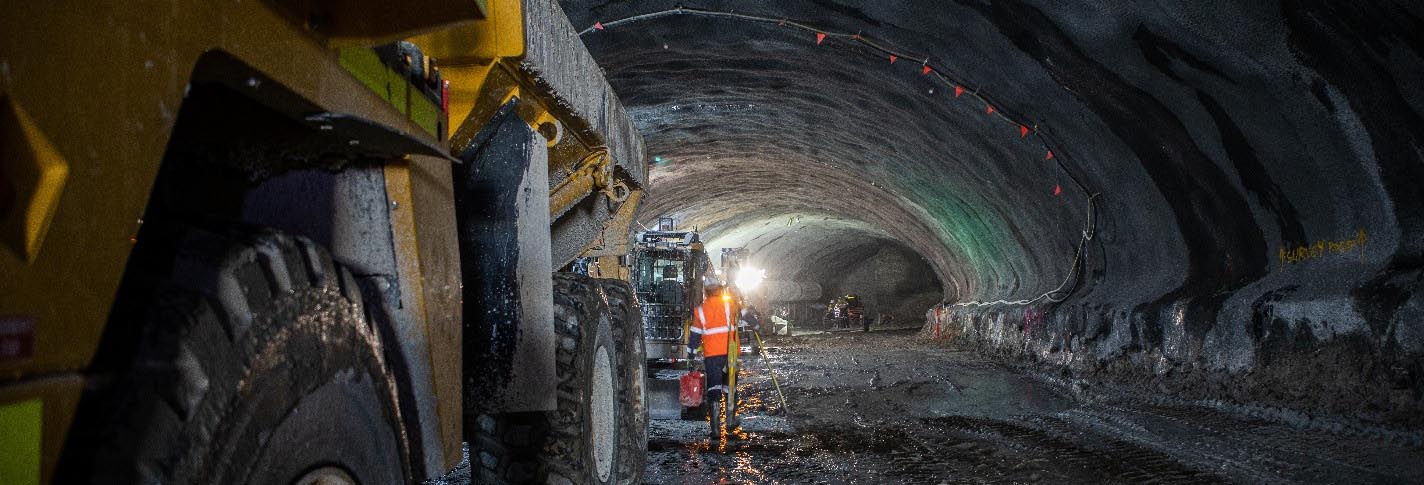UndergroundStructuralUse of Fiber-Reinforced Shotcrete
Peter C. Tatnall
Read MoreAs many of you Shotcrete readers know, there have been many articles published here on FRS, and many more where FRS is mentioned. Two articles in the premier issue of Shotcrete in February, 1999, mentioned FRS. I have been keeping a bibliography of Shotcrete articles
UndergroundRestoring the Century-Old Wachusett Aqueduct
Ray Town
Read MoreEvery day, residents of Eastern Massachusetts quench their thirsts, bathe, flush toilets, do the dishes, and water their lawns with water drawn from the Massachusetts Water Resources Authority (MWRA) water system. Thanks to the Quabbin and Wachusett Watersheds and Reservoirs, 2.2 million people and 5500
UndergroundInternationalSissach’s Saved by a Bypass
Daniel Herzog
Read MoreThe small village of Sissach, near Basel, in Switzerland is one of the nicest Swiss villages in the country, but the serenity is plagued each rush hour by heavy commuter traffic. The solution was a bypass tunnel running through the Chienberg hill to the north
UndergroundInternationalShotcrete for Underground Support IX
Dudley R. Morgan
Read MoreThe Japan Tunnelling Association (JTA) and International Tunnelling Association (ITA) sponsored the Shotcrete for Underground Support IX Conference held in Kyoto, Japan, from November 17-20, 2002. It is a cooperative conference with the United Engineering Foundation, New York, which sponsored the previous eight conferences, the
RepairUndergroundStructuralSilica Fume in Shotcrete
John Wolsiefer, Sr., and Dudley R. Morgan
Read MoreSilica fume is a highly pozzolanic mineral admixture that has been used mainly to improve concrete durability and strength and as portland cement replacement. Silica fume has been used primarily in the United States, Canada, and the Scandinavian countries, but is now finding increasing use
UndergroundDevelopment of a Centrifugal Sprayed System for Shotcrete Application
Hiroshi Yamachi, Masataka Uozumi, Yuji Nagano,Youichi Nakano, and Shunsuke Sakurai
Read MoreA new Japanese Ministry of Health document provides regulations and guidelines for the allowable dust concentration in tunnel works. The recommended maximum concen-tration should be less than 3.0 mg/m3 (2.3 mg/y3) at 50 m (164 ft) from the tunnel face. To observe this guideline, it
UndergroundStructuralSteep Slope Stabilization with Fiber-Reinforced Shotcrete
Michael Ballou
Read MoreFor the past 150 years or so, roads have been built through the mountain passes in the western U.S. and Canada. Sometimes these roads led to mines; sometimes they started as logging roads. Some were built for access roads for the railroad. Many were built
UndergroundStructuralSpecification of Shotcrete Toughness
Roland Heere and Dudley R. (Rusty) Morgan
Read MoreFiber-reinforced shotcrete has become an established material for ground support in tunnelling and mining applications as well as in new construction and infrastructure repair. Designers and speciï¬ers frequently require such shotcrete to maintain some quantiï¬able postcrack strength or toughness. Until the newly published round panel
UndergroundInnovative Shotcrete Application Over Geofoam Structure Supporting Boston’s Central Artery Tunnel
David Jamieson
Read MoreThe objective of Boston’s Central Artery/Tunnel (CA/T) Project is to ease the congestion of approximately 190,000 vehicles per day traveling through the city of Boston. This objective is being achieved through the total reconstruction of Interstate Highway I-93 as it passes through the heart of
UndergroundSteel Fibrous Shotcrete: A Summary of the State-of-the-Art
Charles H. Henager
Read MoreSteel fibrous shotcrete has been used for mine and tunnel linings, for rock slope stabilization, in dam construction, for repair deteriorated surfaces and arches, for fire protection coatings and in thin-shell dome construction.

